Slugs are one of the most common garden pests that every gardener dreads. These slimy creatures may look harmless, but they can wreak havoc on tender seedlings, leafy greens, flowers, and even fruits. Unlike many pests, slugs are particularly persistent because they thrive in damp conditions and can feed both day and night, leaving behind unsightly holes in leaves and a shiny trail of slime.
While chemical slug repellents exist, they can harm beneficial insects, pollinators, and even soil health. Thankfully, there are many natural and eco-friendly methods to control slugs without compromising your garden’s ecosystem. By combining preventative practices with simple remedies, you can reduce slug damage effectively.
In this article, we’ll explore five natural ways to get rid of slugs so your garden can flourish without these slimy intruders.
1. Handpicking at Night – Simple but Effective
One of the oldest and most effective methods of controlling slugs is handpicking. While it may sound unappealing, this direct approach works because slugs are most active at night and in the early morning when conditions are cool and damp.
How to do it:
- Go out with a flashlight after sunset or early in the morning.
- Look under leaves, mulch, and around damp soil where slugs hide.
- Wear gloves or use tongs to collect them.
- Drop slugs into a bucket of soapy water to dispose of them humanely.
Why it works:
Slugs are nocturnal feeders, so catching them when they’re active reduces their numbers quickly. Regular nightly checks for just a week or two can drastically cut down the population.
Extra tip: Encourage children to help by turning it into a “slug hunt” game—it’s both fun and productive!
2. Beer Traps – The Classic Slug Bait
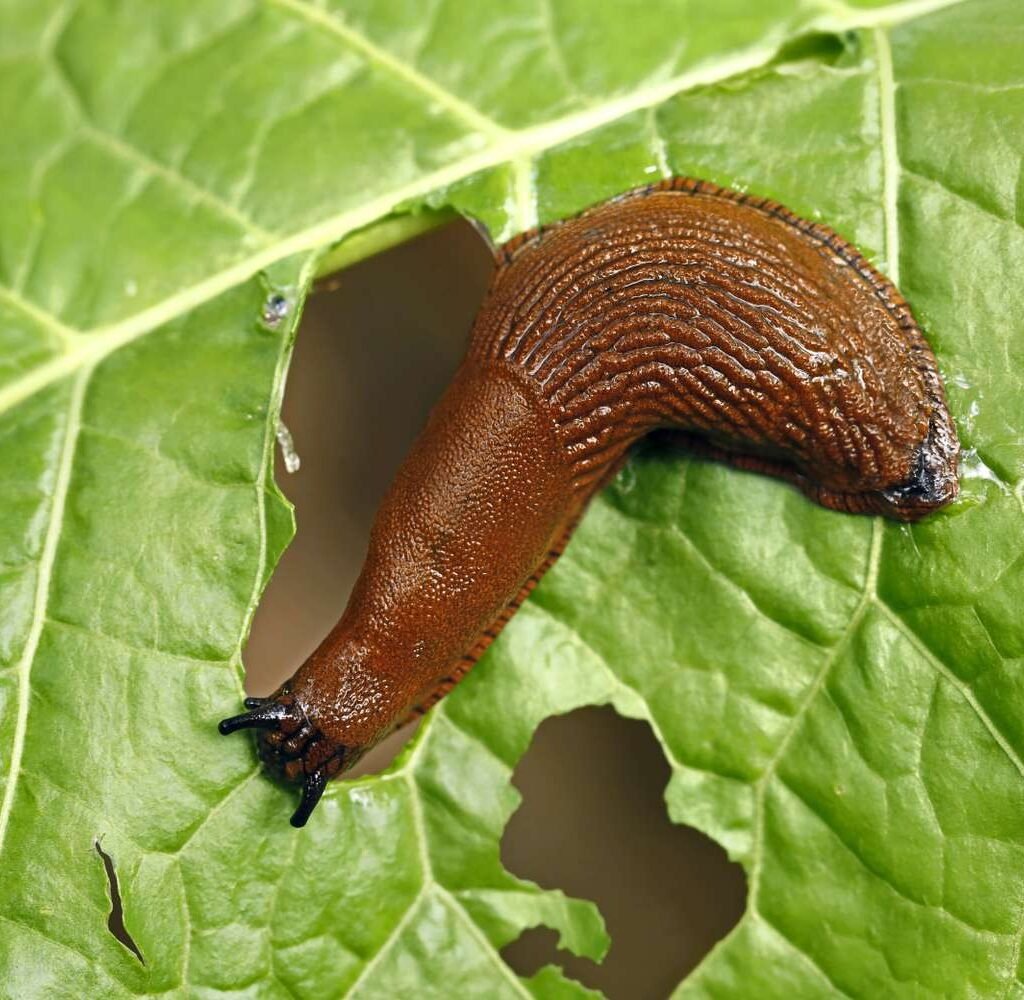
Beer traps are perhaps the most famous natural method for slug control. Slugs are highly attracted to the smell of yeast, which is why beer works so effectively as a bait.
How to set it up:
- Bury a shallow container (like a yogurt cup or jar lid) into the soil so the rim is level with the ground.
- Fill it halfway with beer (cheap brands work fine).
- Leave it overnight.
- Slugs will crawl in, attracted by the yeast, and drown in the liquid.
Why it works:
Slugs have a strong sense of smell for fermentation, making beer traps irresistible. By strategically placing traps around vulnerable plants, you can draw slugs away from your garden beds.
Extra tip: Empty and refill the trap every few days, especially after rain, to keep it effective.
3. Natural Barriers – Make Your Garden Unfriendly to Slugs
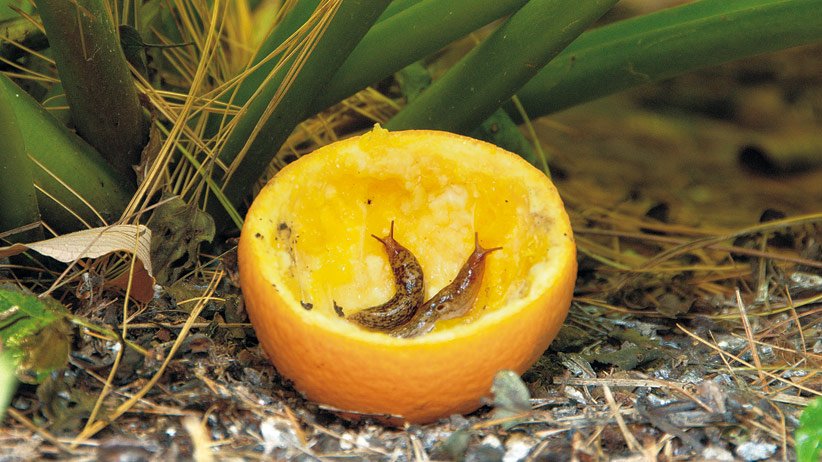
Slugs have soft, slimy bodies, which makes them sensitive to rough, dry, or irritating surfaces. You can use this to your advantage by creating natural barriers around plants.
Options include:
- Crushed eggshells: Scatter around seedlings to create sharp edges.
- Diatomaceous earth: A powder made from fossilized algae that dehydrates slugs. Sprinkle lightly around plants (reapply after rain).
- Coffee grounds: Not only repels slugs with its texture, but the caffeine also deters them.
- Sharp sand or gravel: Acts as a scratchy surface that slugs dislike crawling over.
Why it works:
Barriers don’t kill slugs but discourage them from reaching plants. This is particularly useful for seedlings or crops like lettuce and hostas that slugs love.
Extra tip: Rotate barrier methods to keep them effective, since rain can wash away most materials.
4. Encourage Natural Predators – Let Nature Help
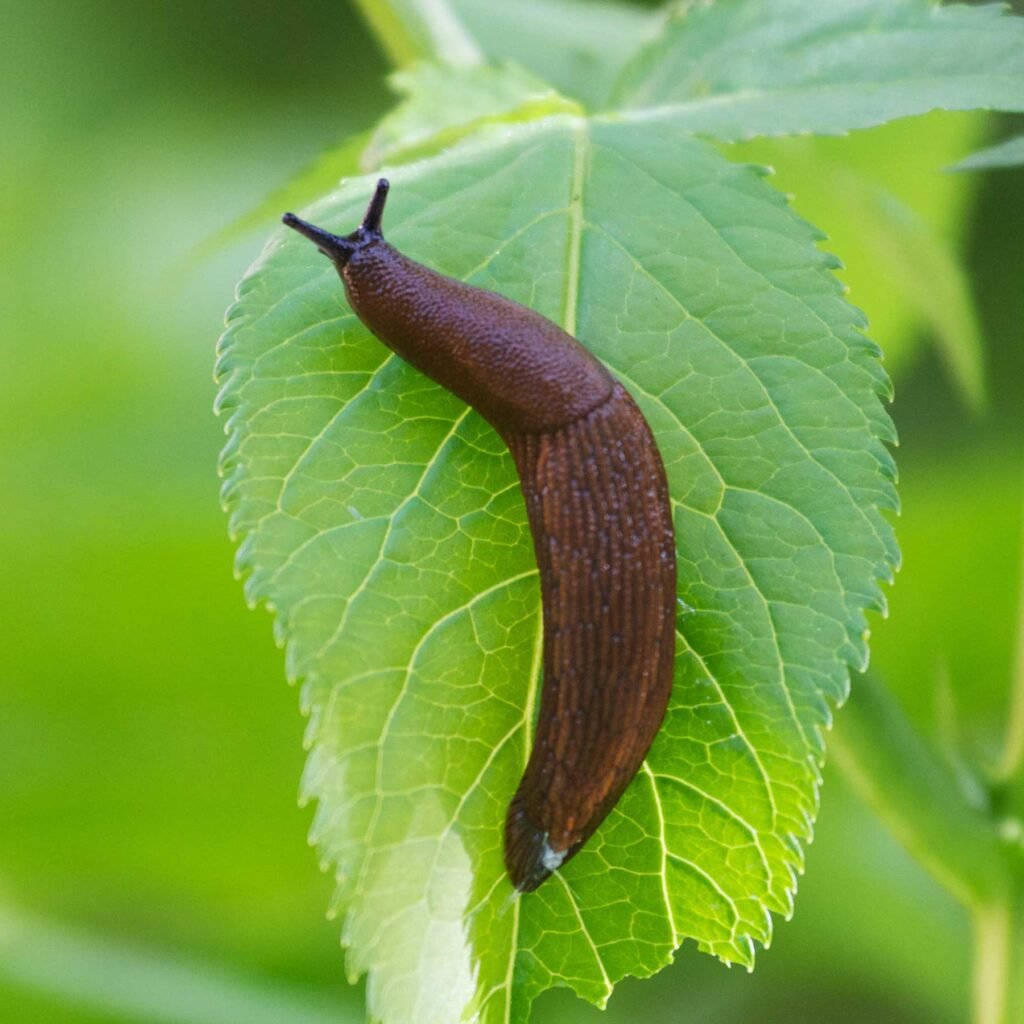
One of the best long-term solutions to slug infestations is to encourage natural predators in your garden. Slugs are a food source for many beneficial creatures, and supporting these species creates a healthy balance.
Predators of slugs include:
- Ducks and chickens: Excellent slug hunters if you keep poultry.
- Frogs and toads: Attracted to ponds or damp shaded areas.
- Ground beetles: Thrive in gardens with mulch and leaf litter.
- Hedgehogs (in some regions): Natural slug eaters if your garden allows wildlife access.
How to attract them:
- Build a small pond or keep a water source for amphibians.
- Provide hiding spots (logs, rocks, leaf piles) for beetles and toads.
- Avoid using chemical pesticides that harm beneficial creatures.
Why it works:
Predator control ensures slugs are managed naturally, preventing population explosions without much human intervention.
Extra tip: If you don’t have space for a pond, even a shallow water dish with rocks can encourage frogs or toads to visit.
5. Companion Planting and Smart Garden Design
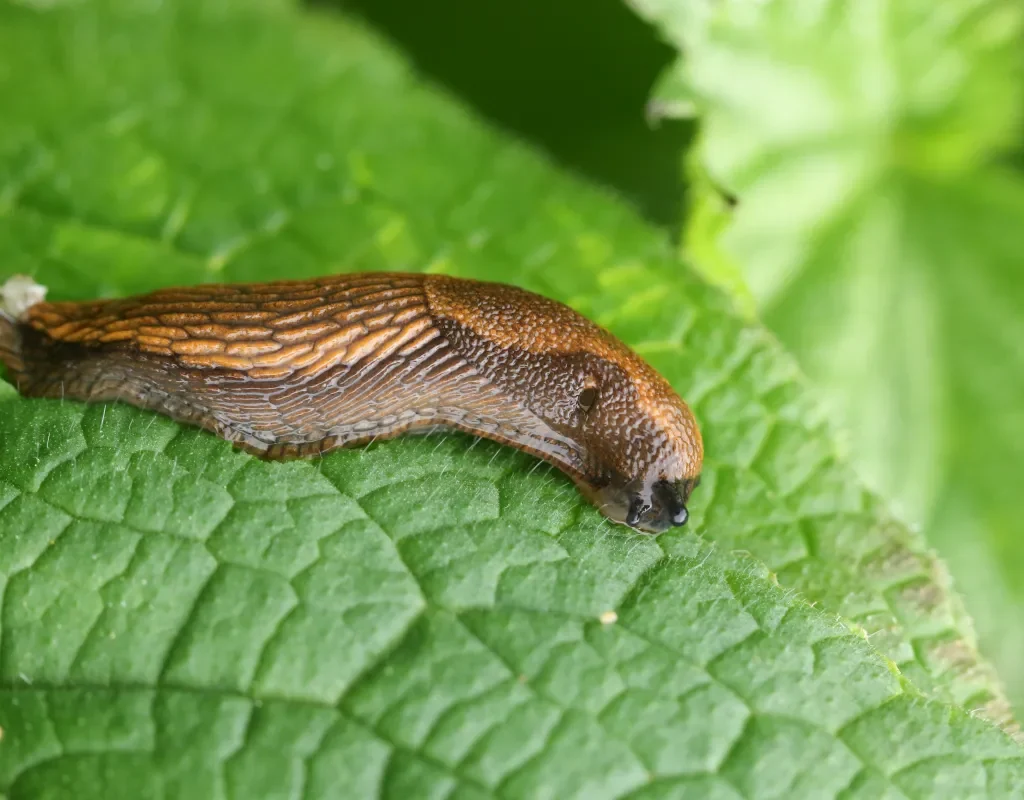
Certain plants naturally repel slugs due to their smell, texture, or taste. By practicing companion planting, you can discourage slugs from damaging your garden.
Plants that deter slugs:
- Garlic and onions: Their strong scent repels many pests, including slugs.
- Sage, rosemary, and thyme: Aromatic herbs that slugs avoid.
- Ferns and foxgloves: Less tasty due to tough or toxic foliage.
Other design strategies:
- Plant sacrificial crops like mustard or marigolds away from your main beds—slugs will prefer these over your veggies.
- Space plants out to reduce damp, shaded hiding spots.
- Water in the morning instead of evening, making soil less inviting at night.
Why it works:
By making your garden less slug-friendly, you’re reducing their feeding opportunities. Over time, they’ll migrate elsewhere in search of easier meals.
Extra tip: Combine companion planting with barriers for maximum protection.
Additional Preventative Measures
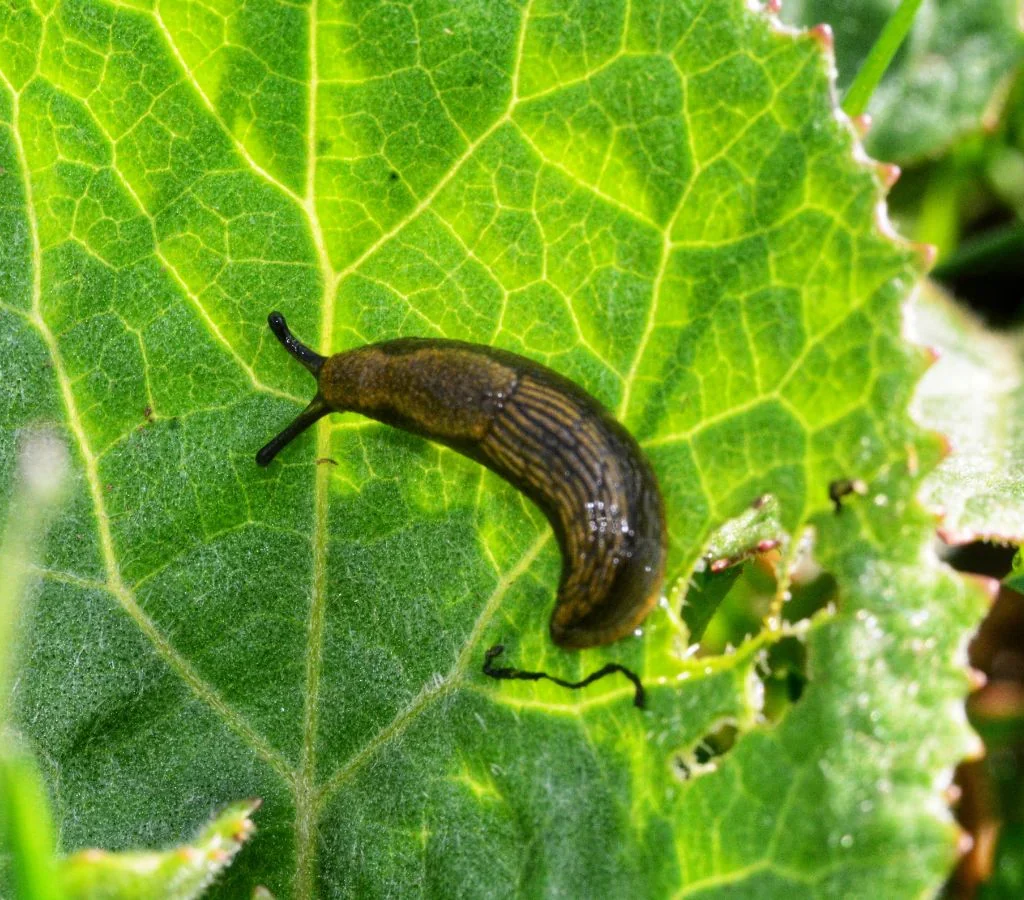
Alongside these five natural methods, here are some bonus tips to reduce slug infestations long-term:
- Remove hiding spots: Keep your garden tidy by clearing weeds, boards, or debris where slugs hide.
- Mulch wisely: Avoid damp organic mulch like straw during heavy slug infestations—opt for gravel or bark instead.
- Rotate crops: Slugs tend to revisit areas they previously thrived in; crop rotation helps break this cycle.
Final Thoughts
Slugs may be persistent, but they don’t have to control your garden. By using natural methods such as handpicking, beer traps, barriers, predators, and companion planting, you can create an environment where your plants thrive while slugs struggle to survive.
Unlike chemical treatments, these solutions are safe for beneficial insects, pollinators, and soil health. With a little consistency, you’ll notice fewer chewed leaves, stronger seedlings, and a healthier, more balanced garden ecosystem.
So next time you spot a slug trail glistening in the morning sun, remember—you don’t need harsh chemicals to fight back. Nature already provides the tools to keep your garden safe.
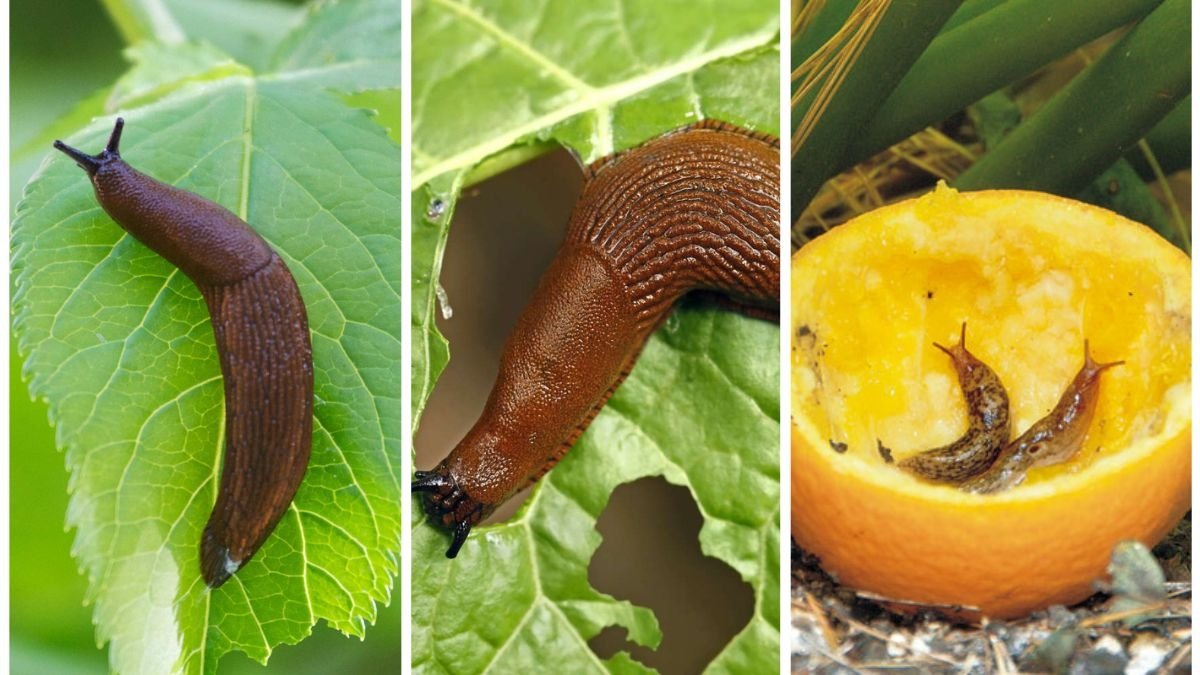
Leave A Comment